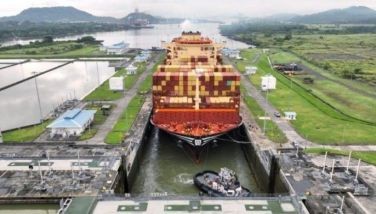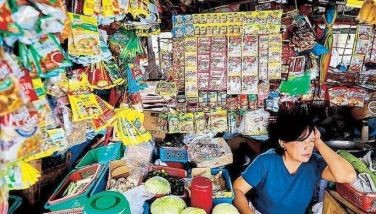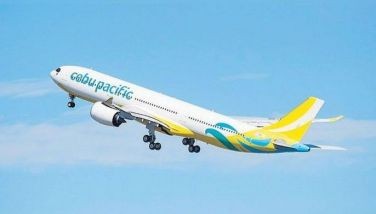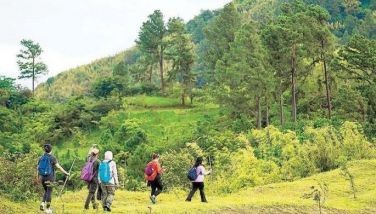Role of LGUs

Both the national government and the private sector are dead set on making sure that the mining industry is one that is both globally competitive and more importantly, one that minimizes environmental risk, promotes mine safety, and upholds environmental law and mining regulations.
At the recent Mining Philippines International Conference, Department of Environment and Natural Resources (DENR) Undersecretary Carlos Primo David revealed that the DENR has pilot tested, and is working on implementing in 2024, a new partnership between the government and the miners called Negotiated Sustainability and Resilience Agreement (NSRA) that is anchored on shared goals on reducing environmental impacts and host-community resilience, among others.
Meanwhile, Chamber of Mines of the Philippines (COMP) chairman Mike Toledo said that their group has been laying the groundwork for further improving their environmental, social and governance (ESG) performance by way of the Towards Sustainable Mining (TSM) initiative.
First established by the Mining Association of Canada years back, he explained that this self-assessment system is evolving into the global standard for miners to manage environmental and social risks and adopt best practices in sustainable mining in their facilities.
However, for exploration and mining in the most environmentally and socially responsible way to happen, there must be full support from local government units (LGUs) whose communities host the mine sites.
Eastern Samar is showing the way how, despite the absence of any regulatory power by LGUs over mining operations, local governments can nonetheless take steps to see to it that miners abide by the provisions of their state-issued mining agreements as well as with the pertinent laws and local ordinances on environmental and social protection.
Governor Ben Evardone has ordered a comprehensive review of the performance and compliance of miners operating in historic Homonhon Island off the municipality of Guiuan, and has warned them that he would formally ask the DENR to suspend or cancel their mineral production sharing agreements (MPSAs), should this ongoing audit prove that they have violated provisions of their mining accords and/or the pertinent laws on protecting the environment and advancing the welfare of these companies’ workers and the people of their host-villages.
If Homonhon sounds familiar, it is because this 20-kilometer strip of island that is rich in metallic minerals like nickel ore and chromite was where the Portuguese explorer Ferdinand Magellan and his crew first set foot on Philippine soil 500 years ago.
In 2021, mining firms extracted 605,176 metric tons of nickel ore and 19,105 metric tons of chromite from the island.
The provincial government’s review team has started going through the performance and compliance reports submitted by the Homonhon-based miners, and hopes to submit their recommendations to Evardone before yearend.
The governor will then decide on whether to keep the status quo or make good on his warning that he will seek the suspension or cancellation of the MPSAs of miners found violating their mining agreements and/environmental and social protection laws.
Evardone had stressed to the miners his belief in his moral obligation as a public servant to make sure that their enterprises fully comply with the law, especially when it comes to environmental and social protection, whose implementation or lack of it will affect even the future generations.
The governor ordered a review and assessment of the performance and compliance reports that the miners had submitted, and to find out what social and community development programs they have thus far carried out or plan to implement in their respective concession areas.
Evardone also wants to find out, they said, whether the miners have been complying fully with labor laws for the benefit and protection of their workers in their mine sites, including their memberships in, and contributions to the SSS, PhilHealth and Pag-IBIG Fund.
Also present in the meeting were officials of Hinatuan Mining Corp., which has a mining concession in nearby Manicani Island, also in Guiuan, but which has yet to resume operations.
Evardone had pointed out during the dialogue that although Hinatuan has yet to operate anew in Manicani, it has been complying fully with its obligations to government.
In a meeting with mining executives, he suggested to the miners to follow Hinatuan in using the template of the Bureau of Local Government Finance (BLGF) in the submission of their accurate sworn declaration for tax assessment purposes on all equipment and machineries they actually have in their mine sites.
He said that while the province has no regulatory power over national scale mining operations, it has the moral obligation to see to it that all mining laws are observed to the letter.
RA 7942 gave exclusive authority to the DENR, as recommended by the Mines and Geosciences Bureau, to issue MPSAs authorizing corporations to engage in mining in the country.
Evardone has said that LGUs can ask the DENR to suspend or cancel the MPSA for of any mining firm for non-payment of taxes for two consecutive years.
Two kinds of taxes are levied on miners – the excise tax on the production and sale of extracted minerals, which is collected by the national government through the Bureau of Internal Revenue (BIR); and real property tax (RPT), which is collected by the LGUs.
The excise tax must be paid to the BIR before the MGB can issue a mineral ore export permit (MOEP), which any miner needs to secure so it can load its extracted minerals and transport or export these products to another country.
LGUs have a 40 percent share of the collected excise tax, and the amount is supposed to be automatically remitted to the beneficiary-LGUs.
Unfortunately, the province has yet to receive any share of this tax ever since mining started in Eastern Samar in the 1980s. But through the intercession of the governor, the province will receive, hopefully by next year, its excise tax share.
Meanwhile, the Eastern Samar provincial government had sent demand letters to mining firms operating in Homonhon Island to pay taxes amounting to at least P133.8 million, some of which were due as far back as in 2012.
These companies include Cambayas Mining Corp. (P96.6 million), Emir Mineral Resources Corp. (P12.1 million), Techiron Resources (P22.5 million), Mt. Sinai Exploration and Development Corp. (P2.58 million), Chromiteking, and Nickelace Inc. whose MPSA is being operated by Global Min-met Resources and Verum Terra Geosciences.
Province officials have revealed that these mining companies had refused to pay their RPT arrears on the ludicrous excuse that paying such taxes to the province’s LGUs would be tantamount to double taxation as they have already been paying excise taxes to the national government.
Evardone is bent on collecting the tax arrears from all the miners saying that the due share of local governments is a big help to realize development projects, such as road concreting, water supply, and school buildings, among others.
For comments, e-mail at [email protected]
- Latest
- Trending






























